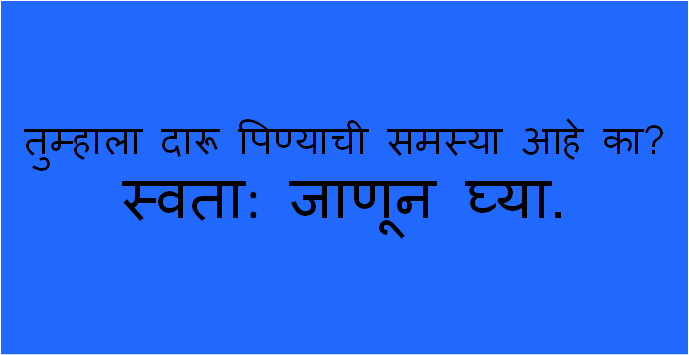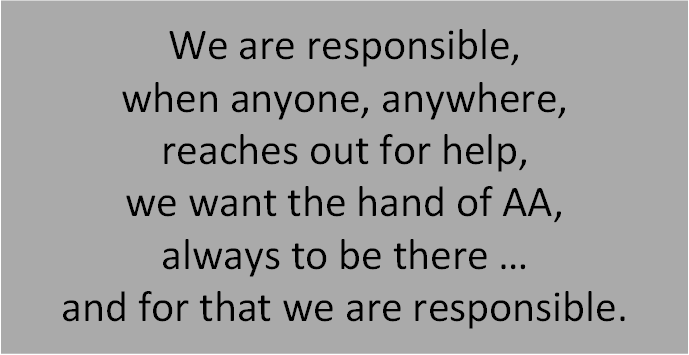Here is an account of how AA came to India and it’s growth in the subsequent years. Though there are no accurate records from the early days, what is definitely clear is that Harold M., a school teacher by profession, was the first person in India, to stop drinking and gain lasting sobriety through the spiritual principles of Alcoholics Anonymous. He stopped drinking on 5th May 1957, and hence that date is nationally acknowledged as the “Founders Day” in India.
How did Harry M. get the message?
A Canadian member of AA named Charley M. was posted to the Canadian Embassy at New Delhi and arrived on 12th January 1957. He then began to give ads in local newspapers offering help to those with a drinking problem. It was one of these ads to which Harry M. responded that enabled him to call on Charley M personally in New Delhi. Harry M. spent some days with Charley in Delhi learning about the disease of alcoholism, the programme and the spiritual principles of Alcoholics Anonymous. He returned to Mumbai armed with the literature given to him and stopped drinking from 5th May 1957. He remained sober till his death on 5th June, 1967.
Pioneering Days
The efforts of Harry M. in spreading the message were indeed stupendous, and by November 1957, after about six months, a small group was already functioning in Mumbai. In less than a year, the AA group in Mumbai had become active in the AA Grapevine of October 1958. The AA directory card of December 1958 records that AA in India consisted of 48 members, of whom 30 were in Mumbai, 7 in Delhi, 5 in Calcutta and the rest in other cities.
Another pioneer of the AA movement outside Mumbai was Trevor K., an Army Officer who also responded to one of the ads from New Delhi. He sobered up on 24th October 1957 and stayed sober till his death on 31st December 1986. The story of Trevor K. appears in the Big Book entitled – “Life-saving words”. Trevor’s service postings took him to new places in India and he became a roving ambassador of the AA movement in India sowing the seeds of the fellowship at Bangalore, Kanpur, Lucknow, Allahabad, Calcutta and other cities.
Growth in Mumbai
The early AA members of Mumbai initially met at the residence of Sam C. in Bandra and later at Victoria High School, Mahim. Thus Mahim group became the first regular AA group in Mumbai. The venue was later shifted to St. Michael’s High school, Mahim, which is today rightly known as “The Foundation Group”.
The history of AA worldwide is full of experiences of dedicated non-alcoholic friends who played a pioneering role in helping the Alcoholics in particular and the AA movement in general. We gratefully remember Dr. M. D. D. Gilder, Mrs. Bertha Castelinho and Miss Ivy Captain who were sympathetic to alcoholics. Dr. Gilder was kind enough to allot separate beds for treatment of Alcoholics in the Seamen’s ward at St. George Hospital, Mumbai. Another was Dr. A.V. Baliga who attended a Dinner at Ambassador Hotel, which was arranged to make the AA movement known to the medical profession and the public at large. He was generous enough to offer financial support which was however, politely declined by the fellowship. There were other non-alcoholic friends of AA, Mr. Eddie Saldanha and Mr. Stan Gonsales, who helped Harry to spread the AA message in the city of Mumbai. Lastly, it was Valerian Cardinal Gracious, Archbishop of Mumbai, who threw open in 1962 the classrooms of the Catholic Schools in Mumbai to Alcoholics Anonymous to hold their regular meetings. This was indeed one of the biggest breaks AA got in the early years.
On 5th August 1997, Shri Ratnakar Gaikawad, I.A.S., Additional Municipal Commissioner, Brihanmumbai Municipal Corporation, who had been a tower of strength to Alcoholics Anonymous in Mumbai, allowed the use of the municipal school premises for AA meetings. This is one more shot in the arm of AA, which was in appreciation and recognition of AA’s service for alcoholism afflicted municipal employees.
Formation of the Inter-Group of Mumbai
In the absence of trusted servants and an organized service structure, uncertainty of the movement prevailed. The importance of an Inter-Group was once again felt by many groups and members. During a special meeting on 15th August 1967, the secretaries present decided to restart the inter-group, to hold inter-group meetings on the 1st Sunday of every month and to contribute group wise for the support of inter-group. The resolutions adopted in this historic meeting of 15th August 1967, comprising a single sheet, became the guidelines of the Inter-group of Mumbai. These guidelines were later enlarged by Augustus D. to their present form and unanimously adopted with effect from 14th July 1975.
A few years before 2012, the AA Mumbai Intergroup Association ceased to be functional. As of May 2012, AA Intergroup members are once again in the process of reviving the Mumbai Area Committee, essentially the AA Mumbai Intergroup Association. In all there are 10 Intergroup in AA Mumbai. One of the IG, the AA West Mumbai Intergroup also known as AAWMIG cater to the service and support needs of the Western Mumbai suburban areas from Bandra to Borivali and has in all 33 AA groups. AAWMIG hold its IG meeting on the third Sunday of every month to discuss and address various service related issues within its area.
Country wide growth and formation of the General Service Office of India
The Mumbai Inter-Group (IG) rendered yeoman service to the fellowship by taking on the mantle of the “apex service body” for the whole of India. AA groups slowly started sprouting in Mangalore, Madras, Delhi, Bangalore, Secunderabad, Pune, Calcutta, Goa, Nagpur, Cochin, S. Kota, Vijaywada, Chalisgaon and the neighbouring areas of Maharashtra.
The demands on Mumbai IG were heavy. Therefore, a need was felt in 1986 to form the General Service Office and the General Service Board in India. The Mumbai IG office bearers journeyed to different states in the country and explained to the groups, the need for having a GSO for our country. The suggestion was well received by all other groups and G.S.O. (India) was born.
General Service Board
The General Service Board held its First General Service Conference at St. Pauls, Parel, Mumbai during May, 9-10, 1987. This Conference was well attended by AA members from all over the country and “A’ & ‘B’ Class Trustees were elected to represent all key regions of the country. Thereafter, the General Service Board has held regular conferences at different venues across the country to enable Alcoholics all over India, familiarize them with the working of the General Service Office and also to meet the different delegates and exchange views. At the IX General Service Conference held in Mangalore, on 22nd Nov. 1991 the delegates completed the onerous task of approving the “Charter” and “Bye-laws” of the General Service Board. Vital tasks like publishing approved AA literature in various regional languages, reprinting English AA literature at affordable prices, maintaining a link with all the groups in India, publishing a national Directory and a national Magazine, maintaining the archives and having a national AA network for effectively carrying the message far and wide were some of the major tasks before the General Service board.
On 5th May 1992, when the original Charter and Bye-laws were published, the Conference and GSO (India) completed 5 years of service and thereafter by Dec 2010 held 30 more Conferences. The period also saw tremendous growth of awareness among all the groups about GSO (India) and the working of the General Service Conference. The GSO (India) has printed the Big Book in English, Hindi, Marathi, Tamil, Punjabi, Gujarati, Telugu, Kannada, Bengali, Nepalese and Malayalam. Pamphlets in several Indian languages were also made available to Groups and other Alcoholic oriented facilities all over India. In the true spirit of AA, the primary purpose of ‘carrying the message to suffering alcoholics’ will continue to be the heartbeat of every group.
On 5th May 2012, AA completed 55 years of its service in India. Looking back, the results are heart-warming. The wide support and awareness generated by the groups in India and its members inspires immense hope for the future.
… additionally you may also read “AA members Eye View“




